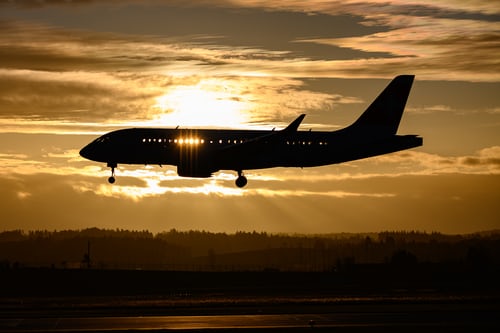
By K Singhania & Co | June 29, 2016
Published in
Aviation Revamps
Latest Foreign Direct Investment (“FDI”) reforms have made India the most open economy in the world in terms of FDI. Following are some of the important FDI aspects in the field of aviation:
- Only non-airline foreign investors will be allowed to bring 100% FDI in local carriers,
- Foreign airlines will be allowed to invest only up to 49% in Indian carriers,
- Out of 100%, 49% will be through the automatic route and anything beyond that will require government approval except for NRIs who are allowed to continue 100% FDI under the automatic route,
- Currently, 100% FDI is allowed through the automatic route in greenfield airport projects (“building new ports rather than purchasing or leasing of existing one”) & 74% in brownfield projects (“purchasing of existing facility to begin new production”) . Now, the Government has permitted 100% FDI in brownfield projects through automatic route for modernizing the existing airports with high standards.
However, while foreign airlines can’t directly own more than 49% in Indian airlines, their group companies or investors can fully own airlines in India with government approval. The government is looking to dilute the rule which makes it mandatory for an Indian carrier to be controlled and owned by an Indian or an Indian entity. This will lead to airlines from the Gulf countries to set up shops in India via their group companies which will increase competition for Indian airlines resulting in benefits for the passengers.”
In civil aviation sector, along with raising the FDI, Centre has also unveiled ‘India’s first-ever National Civil Aviation Policy’ (“the policy”) targeting for greater connectivity at cheaper fares leading to regional development.
There are 34 regional airports in India. These airports have low traffic as compared to Metro Airports. Government has declared some profitable measures regarding these airports:
- A ceiling on ticket price upto Rs. 2,500 is put for one hour long flight & Rs. 1,200 for a half an hour journey [for Delhi-Mumbai flight, which is more than a one hour journey, if person books a ticket sufficiently in advance, the price may be around to Rs. 3,500. The difference of Rs. 1,000 would be made up from the support of state and central government. The central and state governments (in the ratio: 80:20) will bear the losses borne by airlines which wish to fly from and to regional airports.],
- To increase the capacity of running routes of regional airports, the government has eliminated airport charges, reduced service tax & excise duty on aviation fuel,
- State governments are to provide free police, fire services; also power, water and other utilities at concessional rates,
- The government is likely to invest Rs. 50-100 Cr for reviving regional airports which will be no-frills airports,
- The government has also eliminated 5/20 rule, which required domestic airlines to have 20 aircrafts and 5 years of domestic operations to fly overseas. Now, to fly overseas, any domestic airline is required to encompass at least 20 aircrafts & 20% of total aircraft capacity to be allocated to domestic operations at all times,
- Open sky agreements are agreements between two countries to allow any number of airlines to fly from either country, without any restriction on the number of flights, destinations, seats or price. The present proposal is opening skies for countries beyond 5,000 km radius of Delhi (essentially SAARC & Europe) with no restriction on number of seats or flights. But will be applicable to only limited destinations in India,
- Ministry has decided to come up with easy entry and easy exit rules: In the easy exit option, any airline that begins operations on regional routes will be allowed to shut and leave if it is of the opinion that the operations are not profitable after a stipulated time period. This duration has to be decided at the time when route is awarded to that airline. Currently, no such exit rules are in existence
Impacts:
- This will emerge airlines as preferred mode of travel as it will make the air fare closer to the cost of travelling by trains (tier 2 & 3). Air travel would not have any significant difference in terms of price. This would develop the number of passengers in the airline industry,
- Higher ticket sales are expected to improve revenues for domestic airlines,
- Abolishment of 5/20 rule reduce the competition for existing players. (New regional entrants like Air Asia and Vistara have just completed two years of operations and have capacity of less than 20 aircrafts.),
- In the prior rule, any airline would have utilized all its capacity in the international sector. But allocation of 20% of total aircraft capacity to domestic operations will lead to ensure that domestic connectivity,
- Introduction of entry and easy exit rules is also expected to have impact in enhancing regional connectivity & maximum industry participation.
Criticisms:
- Though policy has touched every aspect of civil aviation, it gives no direction for professionalizing to the Directorate General or Bureau of Civil Aviation Security. These are crucial entities that govern country’s aviation safety and security. It is necessary for India to strengthen air safety and security regulators along with the growth in the number of air passengers,
- The policy lacks in completely transforming functioning of Airports Authority of India (“AAI”). Analysts feel that the AAI is focusing upon capital expenses. Also, industry was expecting the hiving off Air Navigation Services from the AAI and making it an independent body. But the policy is silent on long-term plans for airport development. There is little clarity about listing of AAI on the stock exchanges. But, according to analysts, this is not very positive step as airport infrastructure development plans of India are so massive that it requires a strong entity for supervising its execution,
- Focus needs to be shifted from just growth to creation of structures for managing growth,
- The relaxation of 0/20 will not significantly help new carriers like Vistara and AirAsia India as they cannot start fast track expansion owing to a resource crunch. These airlines have exhausted the initial capitalisation and their operations are continuing to make losses. Fast-tracking expansion would mean more cash burn. According to analysts, these airlines would take about three to four years before building a capacity of 20 aircraft, while they need to have enough capital to run the operations in the meanwhile,
- The policy has not given any direction for improvement in regulatory and policy-making competence,
- The policy gives no direction on removing the negative fiscal regime on Indian airlines which includes sales tax on ATF and other taxation measures. These have not been effectively addressed.
Subscribe to our Newsletter
Sign up for daily, weekly, monthly newsletter to get the latest news updates delivered directly to your inbox.
Recent Posts
-

Protecting Brands In India And Europe: Comparison Of Trademarks Laws
February 21, 2024



Leave a Reply